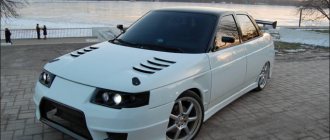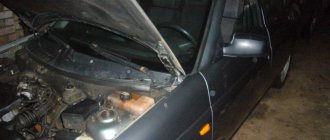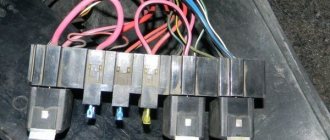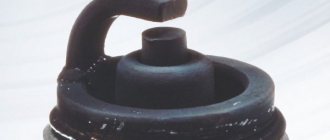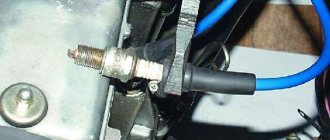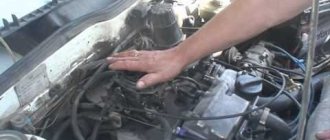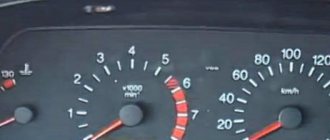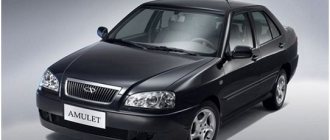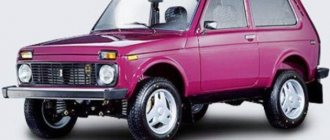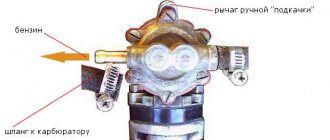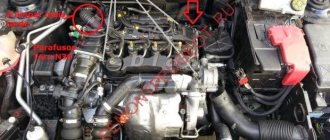It is often difficult to start the engine in winter, when the outside temperatures are very, very low. However, it often happens that carburetor engines begin to show their “whims”. It happens that the engine does not start when hot. So, if you stop and stand for a few minutes, you may not start the car anymore.
Experienced car enthusiasts often know all the features of their car and also know various methods and techniques for starting the engine in a variety of conditions, but the majority, and this is many beginners, with such problems, torture the starter, battery, and their nerves for a long time, but the car does not respond to this.
Typical reasons for difficulty starting a carburetor car
If the car suddenly does not start when hot, then with a skillful approach the problem can be solved.
What you need to understand here is that when the engine is running, a huge volume of air passes through the carburetor. As a result, the carburetor cools down. The same effect can be caused by fuel that also passes through the carburetor. The result of this is that during operation the carburetor temperatures will always be lower than the engine, and certainly lower than the boiling point of gasoline.
However, this situation will continue as long as the motor is running. If the car is stopped, the temperature of the carburetor will begin to rise due to the fairly hot engine body. At this moment there are no longer any air flows, so it will not cool. The gasoline remaining in the float chamber will evaporate very rapidly as temperatures rise.
Fuel vapors will fill any cavities they can reach. This could be the intake manifold, the carburetor itself, the air filter and other parts. The levels of fuel remaining in the float chamber will drop below their normal level, and sometimes so-called gas locks may form in the power system.
How long this process will last depends entirely on how the fuel system of a particular car is designed, on the temperature of the engine and on the outside temperature. Other factors may also affect the duration. So, this effect can last for 5 minutes or 30 minutes.
If during these processes the driver suddenly wants to start the car, then due to the huge volume of fuel vapors that have accumulated in the cavities of the intake manifold, a too rich fuel mixture will enter the cylinders. This is the main reason why the engine does not start when it is hot.
When a hot carburetor engine does not start
Why is it difficult to start when hot and what to do?
the volatility of gasoline is mainly . The bottom line is that when the engine warms up to operating temperature, the carburetor also heats up, and after turning it off, within 10-15 minutes, the fuel begins to evaporate, making it difficult to start the car.
Installing a textolite spacer can help here, but it does not give 100% results.
In such a situation, pressing the gas pedal to the floor and purging the fuel system will help to start a hot engine, but not longer than 10-15 seconds, since fuel can flood the spark plugs. If the question concerns the Zhiguli, then the fuel pump may also be to blame, since Zhiguli gasoline pumps really do not like heat and sometimes completely refuse to work when overheated.
Injector
So, the car won't start when it's hot. Among the most popular reasons is the coolant temperature sensor. If it fails or gives incorrect readings to the computer, then the combustible mixture is supplied incorrectly. This reason is relevant for both diesel and injector.
Next, there are injectors that can pass fuel. When they are in a free state, vapors are formed and the mixture becomes over-enriched. As a result, it does not start when the injector is hot. To check the injectors, you need a stand. But if it is not there, you can check the condition of the spark plugs. To do this, unscrew the candle and carefully examine it. If the nozzle is sealed, the spark plug will be dry. To solve this problem, you need to change the injectors. Some try to clean them - this is not a panacea. To start a car with such a malfunction, you need to open the throttle valve slightly.
This is done in order to purge fuel vapors and relieve pressure in the fuel line. This reason can also occur if the O-rings on the injectors have failed. Injectors are one of the most common reasons for a car not starting hot.
When an injection engine does not start
Since an injection engine is somewhat more complex than a carburetor engine, there will be more reasons why such an engine will not start. In particular, they may be malfunctions of the following components and mechanisms:
- Coolant temperature sensor. In hot weather, it may fail and supply incorrect information to the ECU, in particular, that the coolant temperature is higher than normal.
- Crankshaft position sensor (CPS). Its failure will lead to incorrect operation of the ECU, which in turn will not allow the engine to start.
- Mass air flow sensor (MAF). In hot weather, the sensor may not cope with the tasks assigned to it, since the temperature difference between the incoming and outgoing air masses will be insignificant. In addition, there is always the possibility of its partial or complete failure.
- Fuel injectors. Here the situation is similar with a carburetor engine. The fine fraction of gasoline evaporates at high temperatures, forming an enriched fuel mixture. Accordingly, the engine cannot start normally.
- Fuel pump. In particular, it is necessary to check the operation of its check valve.
- Idle air control (IAC).
- Fuel pressure control.
- Ignition module.
Next, let's move on to considering the possible reasons for poor hot starting in cars with diesel engines.
Diesel diseases
On diesel engines, it is often impossible to start a hot engine due to a broken injection pump. The main symptom of such a breakdown is a worn plunger pair. The same symptoms can be observed if the OPTS valve is faulty. To rule out any suspicion of a plunger, the rear of the high-pressure pump is cooled and an attempt is made to start the car. If the car can be started, then the problem is in the plunger.
Also, the car will not start when hot if the bushings and seals of the high pressure pump drive shaft are worn out.
A space appears under the seal from which air is sucked into the pump. This prevents the necessary pressure from being created in the plunger chamber. In order to cure this, the oil seal and bushings are replaced.
Some diesel units do not start using a control nozzle on which a temperature sensor is installed, which is responsible for creating a mixture of air and fuel. If this sensor is broken, then the injection operation is significantly disrupted. This problem is solved by replacing this part.
It is also not uncommon that a diesel engine does not start when hot due to a stretched pump drive. As with injectors, this changes the fuel injection angle. Only correction can help here. To do this, the pump is simply rotated relative to the device body by a few degrees.
When a hot diesel engine has trouble starting
Unfortunately, diesel engines can also sometimes fail to start when hot. Most often, the causes of this phenomenon are malfunctions of the following components:
- Coolant sensor. Here the situation is similar to that described in the previous section. The sensor may fail and, accordingly, transmit incorrect information to the ECU.
- Crankshaft position sensor. The situation is similar to an injection engine.
- Mass air flow sensor. Likewise.
- High pressure fuel pump. In particular, this can happen due to significant wear of the bushings and oil seal of the pump drive shaft. Air enters the pump from under the seal, making it impossible to build up operating pressure in the sub-plunger chamber.
- Diesel engine idle system.
- Fuel pressure control.
- Ignition module.
Now we will try to summarize the information provided so that it is easier for you to find the cause of the breakdown if it happens to your car.
DTOZH
fuel injectors
injection pump plunger pair
Hot engine stops
This is another very unpleasant moment. It is especially typical for the domestic automobile industry of older model years. If the engine suddenly overheats, it suddenly just stops. This often happens in hot summers.
Among the popular reasons is a gas lock in the fuel pump. These plugs prevent the pump from functioning normally and the float chamber is dry. The combustible mixture simply does not get there. In this case, only cooling the pump will help. It is watered with water.
You should be careful with these devices. The pump housing may contain glass parts.
When there are sudden changes in temperature, glass covers often burst. If cooling does not solve the problem, then the pump needs either repair or replacement.
Why does the starter work poorly?
If a hot VAZ does not start, it may be the battery. Drivers often get out of their cars and leave their headlights on. This is where the battery can drain very quickly, especially if it is old. Also check the terminals.
Further, the starter may not start the engine due to early ignition. The symptom is checked as follows: pull the wire out of its coil and try to turn the warmed-up engine without generating a spark. If rotation is not hampered in any way, then the ignition should be adjusted.
When starting the engine, you have to turn the starter for a long time. What is the reason?
Main reasons
- Worn brushes in the starter. The malfunction is typical for used cars. You will need to remove the starter cover and replace the two brushes;
- Debris accumulation in the fuel tank. Garbage gets into the tank along with gasoline. These unwanted particles enter the fine filter and clog it. Accordingly, less fuel enters the combustion chamber, which is why you have to turn the starter longer.
- The air filter is clogged. Over time, the air filter can also become clogged. This leads to a lack of clean air for fuel.
- Vehicle age. Over time, compression in the cylinders may decrease. Due to low compression, gases leak into the crankcase and the engine cannot be started. This cannot be done without removing and overhauling the engine.
- Old spark plugs.
Is it possible to crank the starter for a long time?
Yes, you can do this, but be prepared for the following problems:
- Dead battery. Each unsuccessful attempt to start reduces the battery charge. In order for the battery to recover the expended energy, you need to start the car and let it run for a while. But if you can’t start, then soon the battery will simply run out. Then you will need to charge it, ask for a light, or try to start it with a pusher.
- Starter failure. Excessive operation of the starter leads to overheating. And this has a very bad effect on its details. Very often they break down, and then you can’t start the car at all. The bendix, which engages with the crankshaft, also suffers. If it fails to start, the splines or bearing may be damaged. So if you turn the starter for a long time, get ready to replace it.
The starter spins for a long time on a carburetor engine.
You can check a carburetor engine using spark plugs. To do this, unscrew them and examine the deposits on the electrodes.
- red color will indicate low-quality fuel. Most likely, it has a high metal content;
- light or black soot appears when the fuel mixture is too lean or rich;
- a slightly brown tint indicates normal engine operation.
The starter spins for a long time on an injection engine
A typical problem with an injection engine, due to which it takes a long time to crank the starter to start the engine, is an error in the on-board computer. This problem can be solved in two ways:
- By reflashing the on-board computer at a service center (or resetting errors);
- Resetting the on-board computer memory by disconnecting the battery. It is necessary to remove the wire from the negative terminal of the battery for 15-20 minutes so that errors are automatically deleted from the memory of the on-board computer, if they were recorded in it.
Check the brushes
Another reason is worn brushes or starter bushings. When the brushes have more wear than recommended, they can no longer reach the commutator. This may be one of the reasons why it won't start when hot. If the support bushings wear too much, the armature, due to heating, touches the stator, and a short circuit occurs, which can reduce the starter speed. Here, to make a diagnosis, you should ring the anchor using a multimeter. Turn-to-turn short circuits are also checked. The next reason is the wrong set of bushings. When they get hot, they jam. Here you should go through the bushings with a reamer or sand them with sandpaper.
Typical problem - ignition switch
The lock is very often to blame for poor starting. To diagnose it, check the contact group of the lock.
Sometimes car enthusiasts install a second relay to reduce losses in the lock circuit.
The solenoid relay on the starter may not work. The problem can be detected by ear. There will be no distinct click when turning the key. The relay can be easily replaced. Next, you should check the condition of the wire of the terminal of this relay, and also make sure that the wire that connects the starter and the battery is intact.
Check the engine
It happens that sometimes one or more bearings are rubbed on the crankshaft.
When the engine is cold, the starter spins it up perfectly; when the engine warms up enough, the liner clamps with the crankshaft. It also happens that due to wear of the axial displacement liner, the crankshaft itself is displaced from its axis. All these problems can be corrected only by repair.
How to make a hot engine start well
To do this, it is necessary to lean the fuel mixture to normal. When starting a hot engine, depress the gas pedal halfway. Sometimes it even happens that it is necessary to depress the pedal completely. If you press and release the pedal several times, you may not improve, but, on the contrary, worsen the situation. The pump will send more and more fuel mixture, which will further enrich the mixture. In this case, starting the engine will be very problematic.
Novice drivers, having driven a car, begin to understand it better, and then such problems do not arise. After starting the engine, with a few presses on the accelerator, the car will move off without any problems.
That's pretty much all that can be said about this problem. If it doesn’t start when hot, there may be other reasons, but you now know the main sources and can diagnose your car yourself.
Bad fuel as a possible problem
When you fill up with low-quality gasoline or diesel fuel, you shouldn’t be surprised why the engine doesn’t start well when it’s hot. Fuel is the most common cause of poor engine starting. This is easy to check. Just remove all the fuel and fill it with new, better quality. If you previously refueled with A92 gasoline, then you can try filling it with A98 and see how the car behaves. In the case of diesel fuel, you need to change the gas station and choose a more reliable seller.
The following problems may occur with the motor:
- There is a high content of additives in the fuel, which are poorly accepted by the engine.
- It is difficult for the pump to pump the required volume of fuel due to clogged filters.
- Engine control settings are lost. Inaccurate operation of the air mixture supply is also possible.
- The idle air valve and mass air flow sensor may be the culprit.
- Features of the operation of carburetor engines. If they are too hot, they have trouble starting.
The last point does not apply to injection engines. It’s just that carburetor engines have such a feature that they don’t start well when hot. This is due to the fact that the carburetor heats up to a very high temperature. Gasoline evaporates under the influence of temperature and fills the carburetor chambers and tubes as gas. In this case, the float chamber remains empty. And if you start the engine 5 minutes after stopping the engine, you may encounter a problem starting it, because... there will be no liquid fuel in the combustion chambers. This is normal, and this problem can be solved either by manually pumping fuel or by several attempts to start the engine. In injection power plants, this problem is eliminated, because there the fuel is delivered to the combustion chambers directly from the main line.
